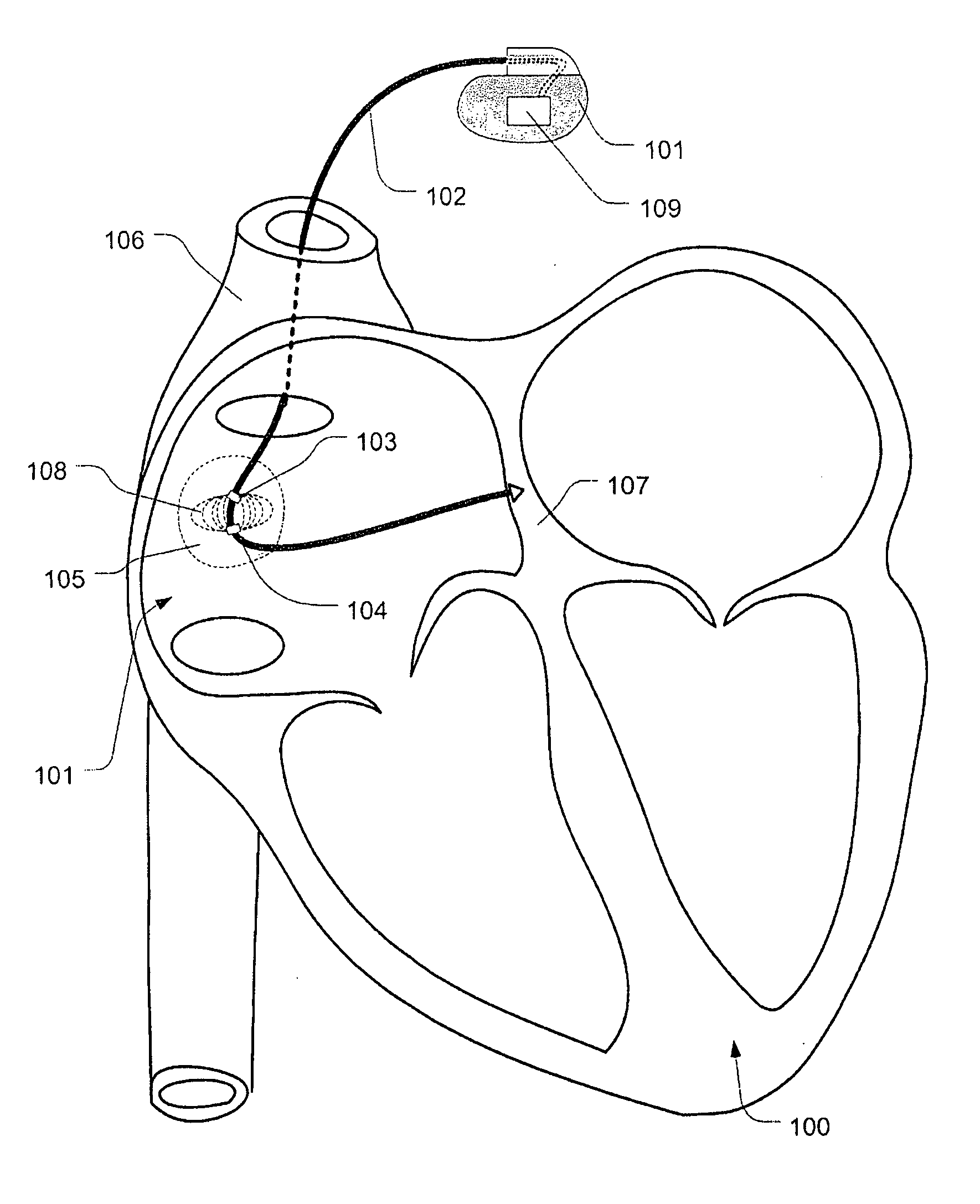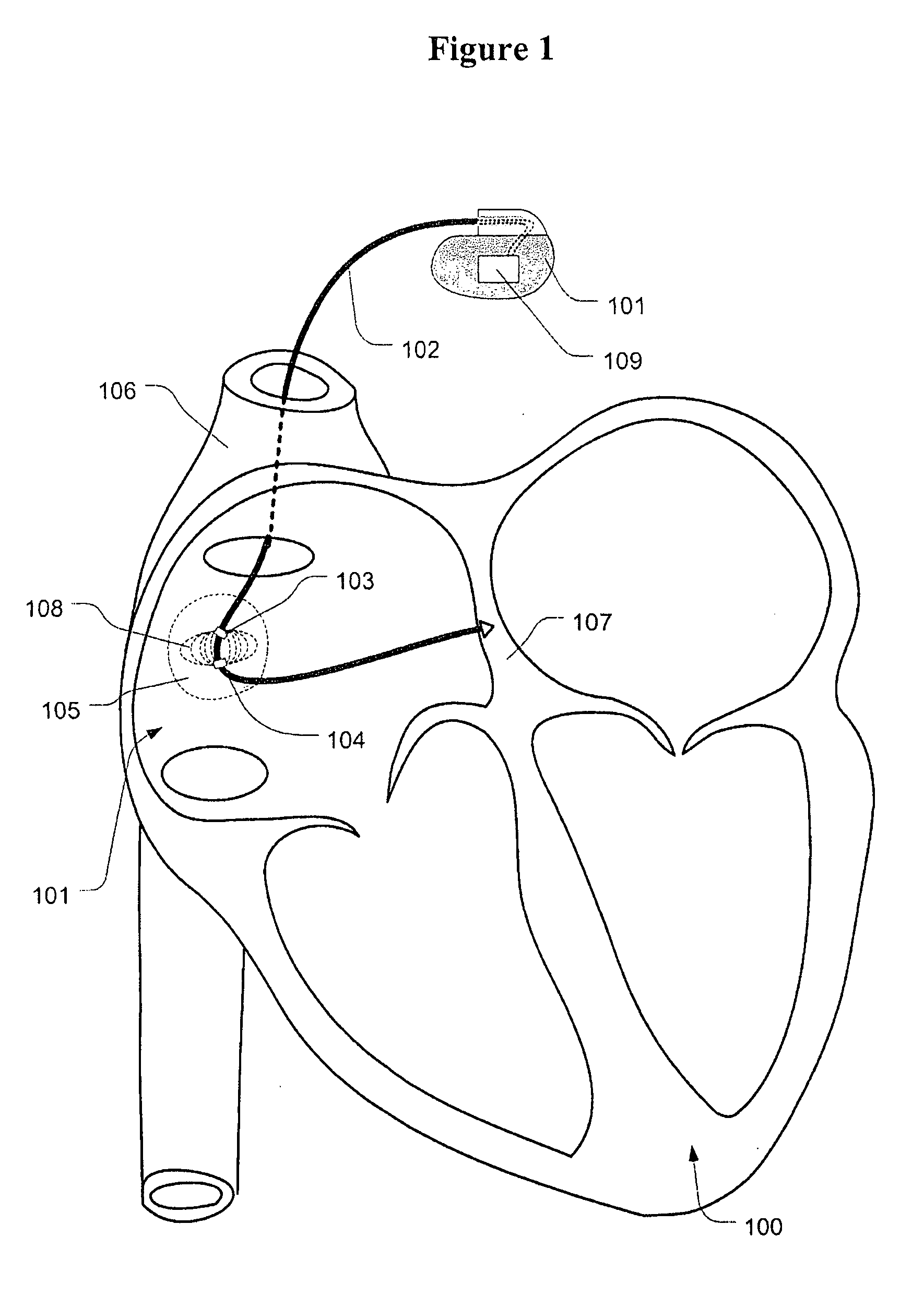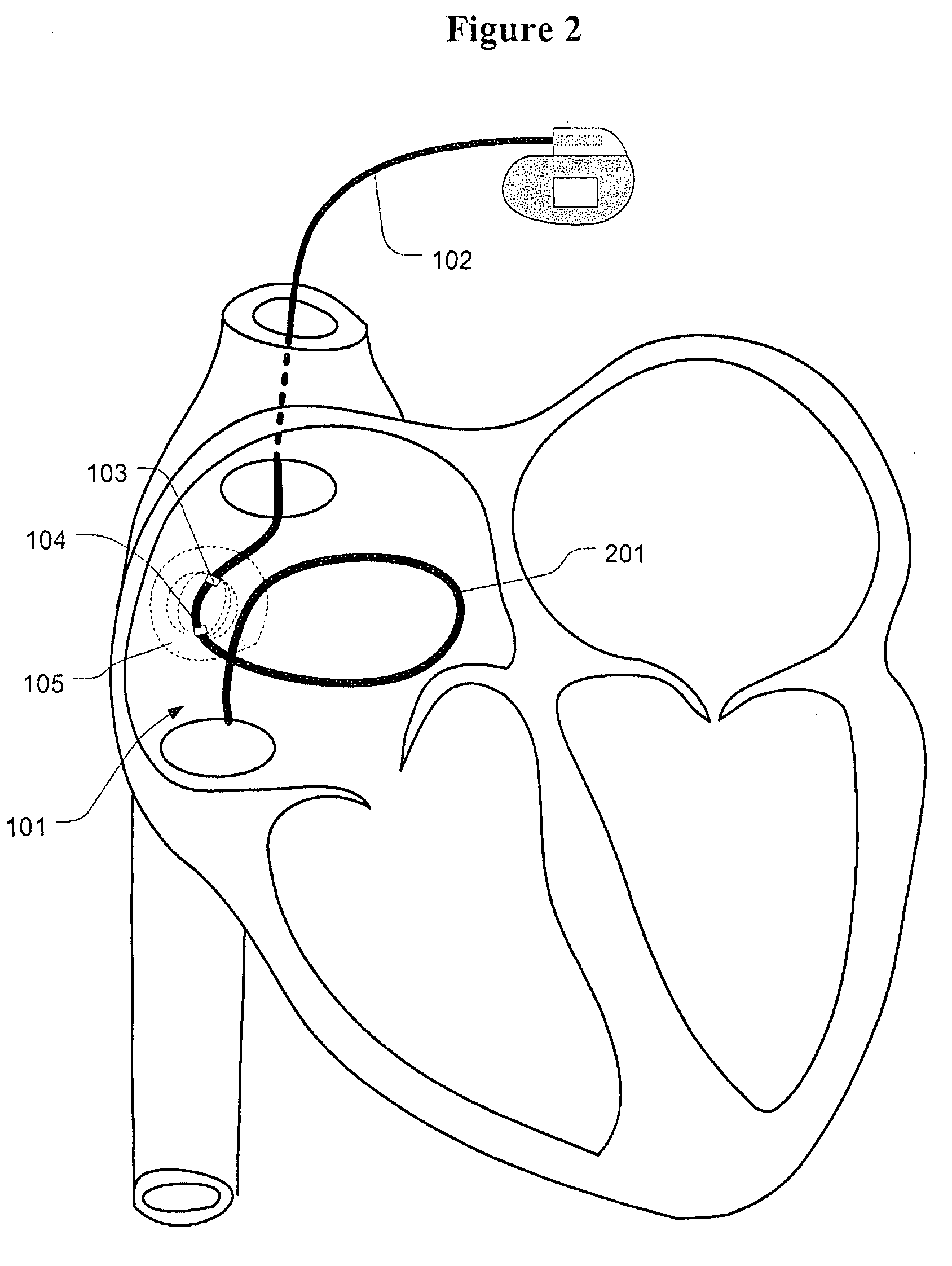Heart rate reduction method and system
- Summary
- Abstract
- Description
- Claims
- Application Information
AI Technical Summary
Benefits of technology
Problems solved by technology
Method used
Image
Examples
Embodiment Construction
[0043]For the proposed clinical use, the capability of the invention is to controllably and reversibly reduce the heart rate with the goal of improving the patient's heart function and overall condition and ultimately to arrest or reverse the disease.
[0044]FIG. 1 illustrates the heart 100 treated with the invention. The IPG 101 is implanted in the patient's body using standard interventional cardiology techniques common to the implantation of pacemakers. The lead 102 is electrically connected to the IPG 101 and to the heart 100. It is understood that the IPG 101 can be also a cardiac pacemaker and can have more leads. It is expected that in future cardiac pacemakers will have ever more leads connecting them to various parts of the anatomy. The leads can combine sensing and pacing electrodes as known and common in the field. The IPG 101 is equipped with the embedded intelligence 109 that enables it to sense signals, process the information, execute algorithms and send out electric si...
PUM
 Login to View More
Login to View More Abstract
Description
Claims
Application Information
 Login to View More
Login to View More - R&D
- Intellectual Property
- Life Sciences
- Materials
- Tech Scout
- Unparalleled Data Quality
- Higher Quality Content
- 60% Fewer Hallucinations
Browse by: Latest US Patents, China's latest patents, Technical Efficacy Thesaurus, Application Domain, Technology Topic, Popular Technical Reports.
© 2025 PatSnap. All rights reserved.Legal|Privacy policy|Modern Slavery Act Transparency Statement|Sitemap|About US| Contact US: help@patsnap.com



